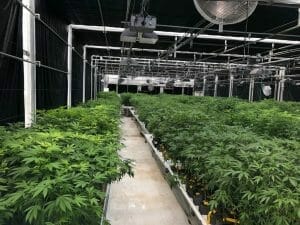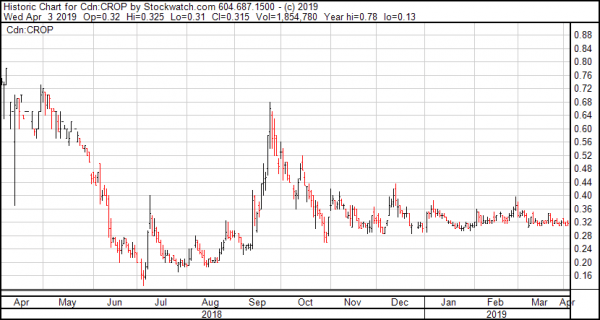As the market for cannabis products develops, companies in the space will need to find new and innovative ways to cut costs and maximize their profit potential.
That means vertical integration and reduction of overhead associated with production, distribution and packaging.
And this is where Crop Infrastructure (CROP.C) excels.
Their secret is they don’t completely own anything.
CROP’s business model is to invest capital in land & equipment to increase weed operators’ growth. It’s a cannabis-specific Real Estate Investment Trust (REIT) – with massive leverage to the frontier cannabis markets.
CROP’s opportunity arises from the fact that U.S. federal regulations prevent mainstream lending institutions from investing in weed companies. CROP invests in producers and processors through lease programs and fee-based management options.
–Equity.Guru’s Lukas Kane.
Crop’s subsidiaries have tenants who engage in land and equipment rentals, and in exchange Crop gets a percentage of their profits funneled back as “rent.”
So, as Hempire and Evolution Brands spread to 40 Washington retail locations this week, offering over 100 different SKUs for sale, Crop will get a percentage of the sales through their subsidiary, Humboldt Holdings, which owns the brands.
This follows Humboldt Holdings acquisition last month of 25% interest in the licensed distribution company Wheeler Park (WP) and their own California-based manufacturing facility.

The facility offers Crop a major competitive advantage with its low electrical costs of $0.02 per kilowatt-hour and greenhouse style growing, which execs say is the lowest power cost in North America.
WP was recently converted to a hydroponic facility, and is expected to turn out 1,000 pounds of dried flower every month, and let Evolution and Hempire process their own cannabis flower, trim and biomass into THC distillates.
The manufacturer will absorb the distillate production costs, and take 40% of the revenue, while Crop and its tenant will take the other 60%.
The facility also offers the possibility of processing third party material, which could be used to develop more products under Crop’s brands.
The facility also offers packaging and distribution, providing vertical integration for Hempire while increasing profitability for Crop’s California operations by lowering distribution costs, and opening up exposure to hundreds more potential dispensaries.
This shows a lot of potential, but one question remains.
Does Crop’s business model work?

The stock price has hovered around the $0.30 mark since December and is at $0.31 at the time of this writing.
It’s also relevant to note that we’ve past the stage where production increases, accretive acquisitions, and grower partnerships matter.
It’s not that they’re not important, but these developments need to lead somewhere substantial.
Now investors want to see solid margins, sales figures and a growing base of happy returning customers.
Six-in-ten Americans say they want marijuana use to be legal according to a new Pew Research Center survey, and that highlights a generational development in political will.
Majorities of Millennials (74%), Gen Xers (63%) and Baby Boomers (54%) say the use of marijuana should be legal.
Eventually recreational cannabis will be legal nationwide and when it is, the market will be enormous.
—Joseph Morton
Full disclosure: Crop Infrastructure is an Equity.Guru marketing client.

